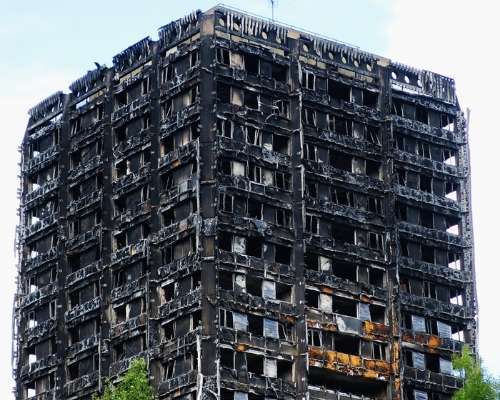Related Post
From Building Safety Act to Developer Remediation Contracts: the recent updates to UK Building Regulations
0%
Why have UK building regulations changed?
Over the past few years, a number of high-profile building-related accidents in the UK have put both construction safety and building quality under the microscope. Undoubtedly, the most infamous is the deadly 2017 Grenfell Tower fire in London, where substandard building materials combined with failures of fire prevention systems were blamed for the fire’s quick spread. On June 14th, 2017, 72 residents of the Grenfell Tower block in West London lost their lives due to insufficient cladding being used for the renovation of the tower between 2015-2016. There were failings in the renovation and the ongoing site maintenance that could both be directly attributed to poor auditing and no shared responsibility that auditing brings with it.
Grenfell has become the symbol of the need for change within the industry. For some time now, achieving thorough audit trails has been a challenge in construction, and as we’ve seen, this has led to events like Grenfell that have changed peoples’ lives forever. It has also led to many discussions, introspection and public commitments to change building processes to ensure safer, higher quality projects moving forward. In short, the changes to UK building regulations are to bring a higher quality of projects moving forward, as well as remediate existing works that include faulty or substandard building materials.
We’ll cover the latest changes to the Building Safety Act, and the Developer Remediation Contract.

What is the Developer Remediation Contract?
On the 30th January 2023, the government wrote to developers asking them to sign a contract committing them to remediate unsafe buildings which they originally developed. At the time of writing, 46 developers have attached their names to the contract.
This contract symbolises the developers taking full responsibility for any faulty or unsuitable cladding that has been installed onto high rise buildings of over 20m.
However, there are concerns that it isn’t as simple as getting developers to foot the bill. There are already ongoing legal cases between developers and subcontractors and developers and the supply chain, respectively. Stating that one single party (i.e. developer) is at fault is expected to cause pushback and increased legal disputes from developers.
For example, at the beginning of 2023, Willmott Dixon filed a suit against its supply chain on the Woolwich Central job in an effort to recoup £47m worth of remedial costs. These were previously paid out to the project client, Tesco, of April 2022. The case is currently ongoing, but it is expected if the outcome falls in the favour of Willmott Dixon, that many other developers may decide to pursue legal action against their supply chain.
What is the Building Safety Act?
The Building Safety Act (BSA) was first introduced in July 2021 by parliament and reached Royal Assent 28th April 2022. The Building Safety Act came into effect on the 1st April 2023, with a deadline of October for existing qualifying buildings to be registered onto the Act.
Under the Building Safety Act, high-rise residential buildings 18 metres and over (or 7+ storeys) with two or more residential units are defined as ‘higher-risk’.
There are estimated to be around 12,500 of these buildings in England and the new regulator will require all of them to be registered from April 2023, with a named person responsible for maintaining their safety.
As part of the reforms, Health and Safety England (HSE) has been named as the new Building Safety Regulator. They have a wealth of resources for businesses looking to navigate the changes, from defining the new responsibilities to identifying structural hazards.

Who is the Accountable Person (AP)?
The Accountable Person for a property is the organisation or person who owns or has responsibility. It can also be an organisation or person who is responsible for maintaining the shared areas of a building, such as receptions and stairwells. This can be multiple people, in which case there would usually be a Principle Accountable Person (PAP) who would take the lead. But in each case, it is not the owner(s) or tenant(s) of individual apartments or flats.
The Accountable Person(s) is also responsible for the registering of a new building before occupation. Existing buildings need to be registered with the BSR between April 2023 and October 2023, as it is an offence to lapse this deadline.
How can technology help with the Golden Thread?
Firstly, the golden thread of information needs to be digital. Therefore, no matter the format businesses choose to collect the information, it needs to be stored digitally. Whilst some businesses may choose to use a generic file storage system or an excel sheet with a checklist, using tools made for construction could elevate your projects simultaneously.
Our site-based solution, Field View, captures information out in the field for a thorough golden thread of information. This includes digitised forms, geo-tagged photographs and an approval audit trail that can be referred back to after a project’s completion. When handover approaches, our customers know they can provide a complete package of information that is readily accessible and accurate.




